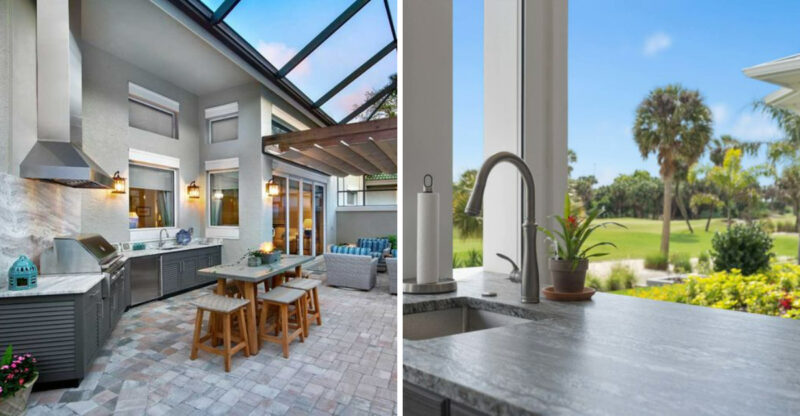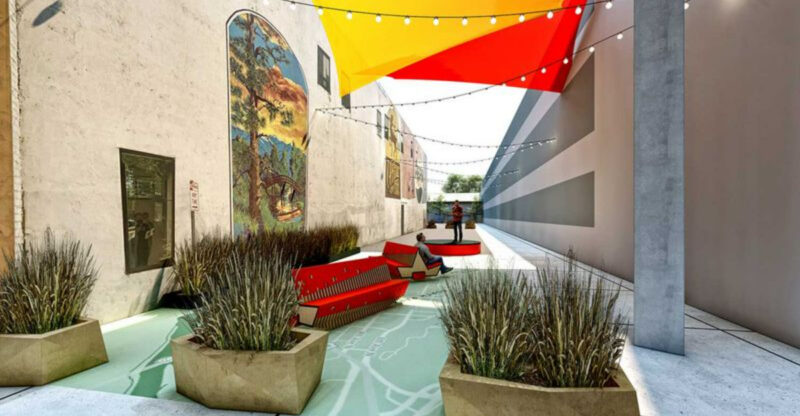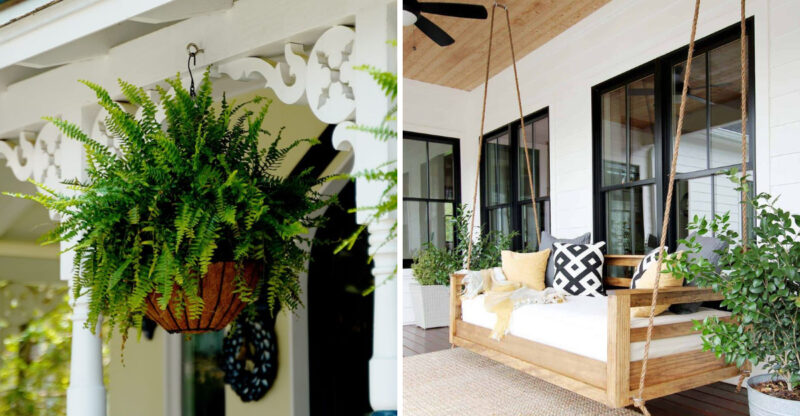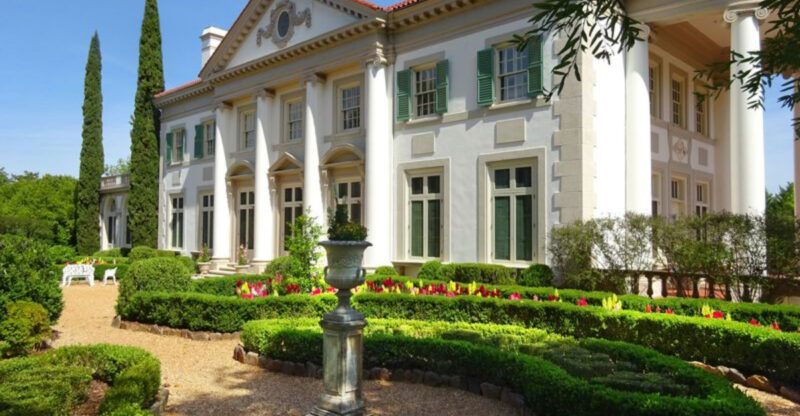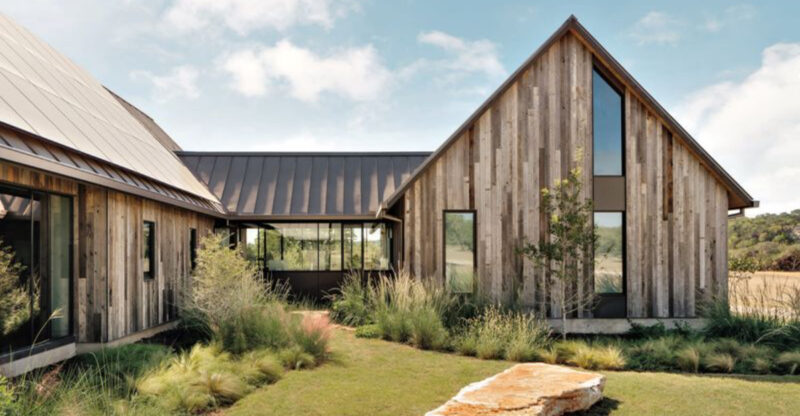21 Things That Make Your Front Yard Look Empty, According To Designers And Gardeners
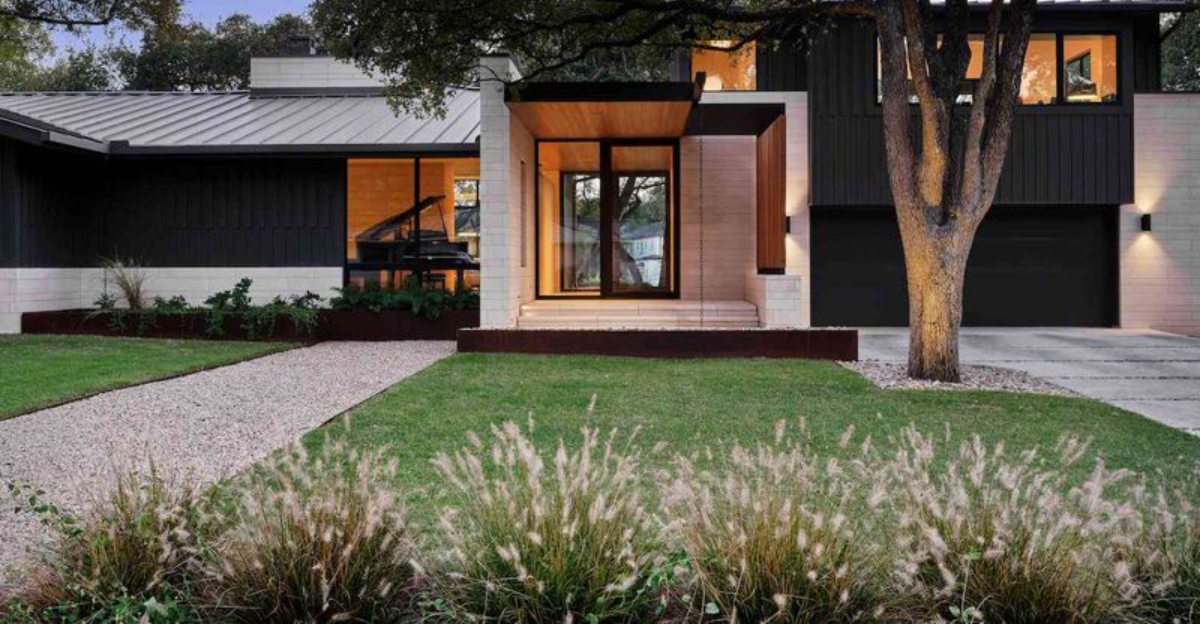
Ever look at your front yard and think, “Why does this feel like the landscaping equivalent of an awkward pause?” You’re not alone, and no, more mulch isn’t the answer.
Designers and gardeners agree, it’s not just about what you plant, but what you forgot to. From lonely walkways to grass that goes on like a green desert, there are plenty of things making your yard look more barren than welcoming.
Let’s fix that emptiness and give your front yard the curb appeal it’s quietly begging for.
1. Lack Of Vertical Elements

Front yards without tall elements feel flat and one-dimensional. Trees, trellises, or pergolas add that crucial vertical interest that draws the eye upward and creates depth.
When I visit homes with nothing reaching skyward, the property immediately feels unfinished. Like wearing pants without a shirt, technically covered, but missing something essential!
Consider adding columnar trees, garden obelisks, or even a flagpole to break that horizontal monotony.
2. Bare Foundation Walls
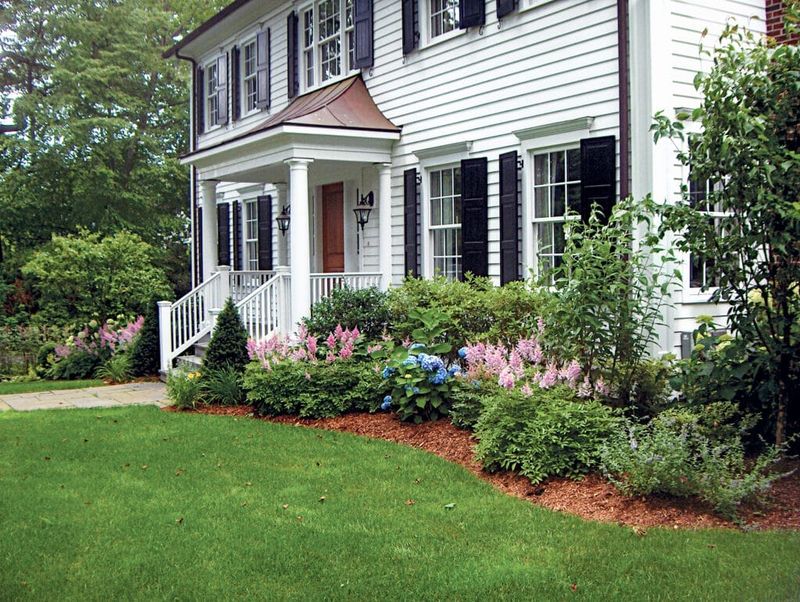
Nothing screams ‘unfinished project’ louder than exposed foundation walls with no plantings. Those naked house foundations create an awkward disconnect between your home and landscape.
Foundation plantings soften hard architectural lines and anchor your house to the surrounding landscape. Without them, your home looks like it was randomly dropped onto the property yesterday.
Low-growing shrubs, ornamental grasses, or flowering perennials will beautifully bridge that gap between building and yard.
3. Single-Species Planting
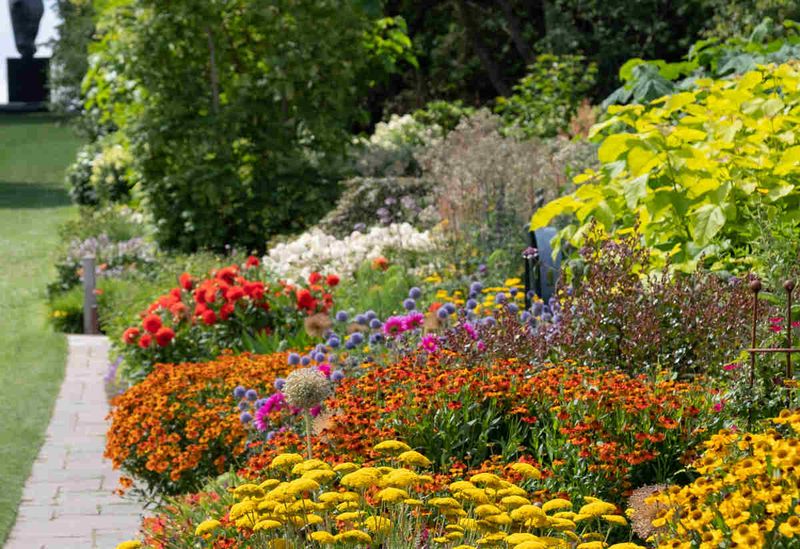
Monotony is the enemy of good design! Yards with just one type of plant, looking at you, homeowners with nothing but hostas, create a boring, flat appearance that lacks visual interest.
Variety is crucial for creating rhythm and movement in your landscape. Mix evergreens with deciduous plants, combine different leaf shapes, and incorporate varying heights.
The magic happens when you layer plants with contrasting textures, colors, and blooming seasons to create year-round appeal.
4. Absence Of Seasonal Color

Why does your garden look like it’s stuck in a single episode of a very dull nature show? Because it forgot to change costumes! Gardens without planned seasonal color are like sitcoms with no character development, static and kind of sad.
A well-planned yard should keep things interesting year-round. Spring bulbs make a dramatic entrance, stealing the early spotlight. Then fall foliage struts in like it’s auditioning for a leaf-peeping tour. Every season gets its moment, and your yard stays anything but boring.
Even tossing a few flower pots by the door can wake things up faster than your morning coffee.
5. No Defined Borders
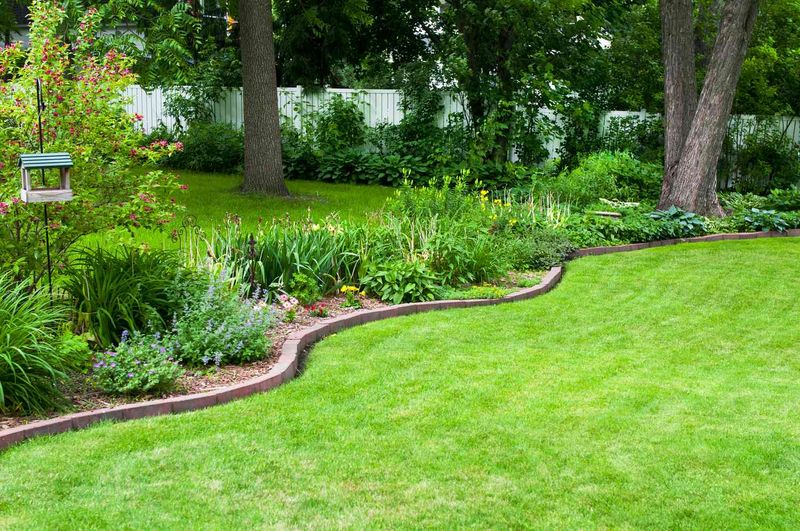
Yards without clear edges between lawn and planting beds look unintentionally messy. Borders aren’t just decorative, they’re the crucial framework that organizes your entire landscape!
Well-defined edges create that polished, intentional look that separates amateur gardens from professional designs. Think of them as the picture frames that showcase your plant collection.
Stone edging, low boxwood hedges, or even simple trench edges can dramatically improve your yard’s appearance while making maintenance easier.
6. Lack Of Focal Points
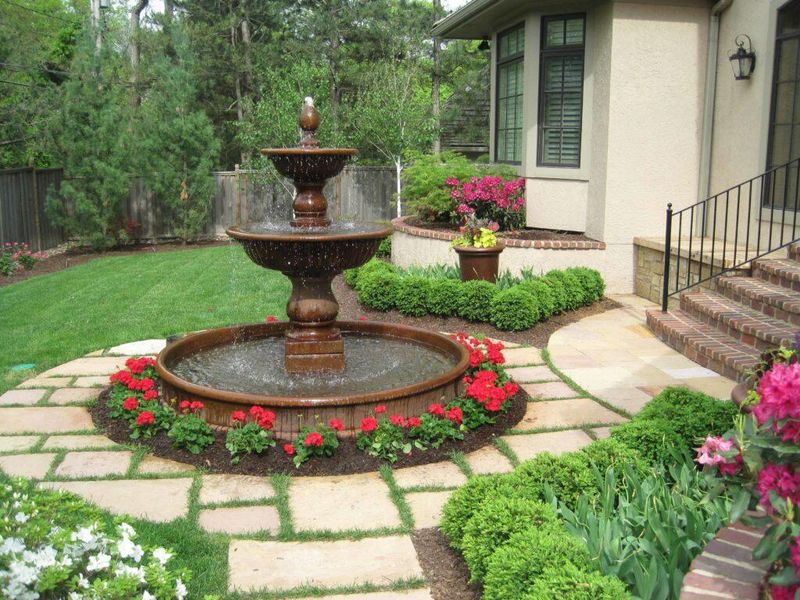
Without a focal point, the eye wanders aimlessly across your yard with nothing to anchor the design. Every compelling landscape needs something that commands attention and gives the viewer’s gaze somewhere to rest.
Focal points create instant character and can reflect your personal style. An ornamental tree, sculpture, water feature, or even an architectural birdhouse can serve this purpose beautifully.
Place these attention-grabbers strategically. Perhaps, frame your entrance or the end of a pathway to draw visitors through your landscape.
7. Overlooked Lighting
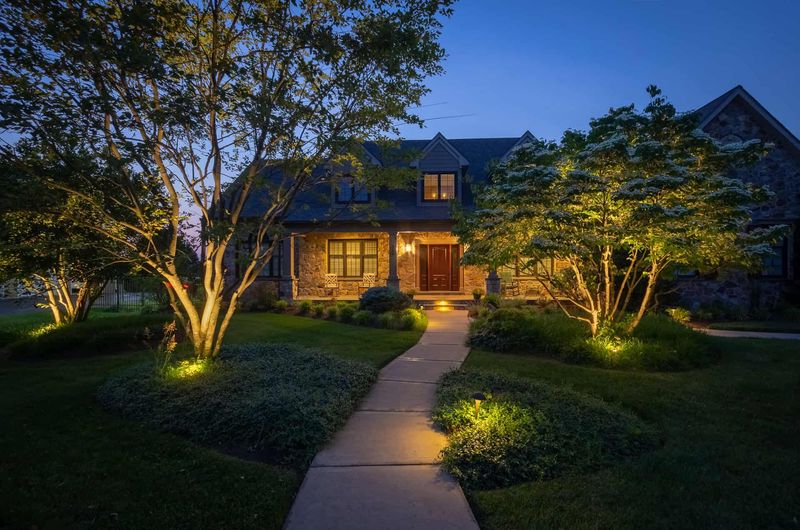
I once designed a garden that looked stunning during the day, but at night, it vanished into total darkness, like a magic trick gone wrong. Once we added lighting, though? Instant transformation.
Path lights turned a plain walkway into a glowing invitation. Uplights under trees cast the kind of shadows that made guests stop and stare.
Even a few solar stakes brought the flower beds to life after sundown. Suddenly, the space wasn’t just a garden, it was an experience that didn’t clock out when the sun did.
8. Forgetting Hardscape Elements
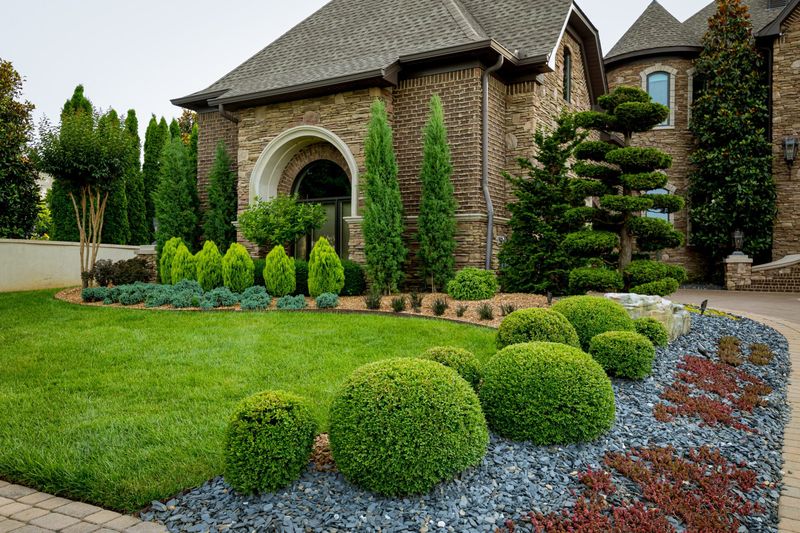
Gardens with only plants and no hardscape elements feel incomplete and lack structure. Hardscape provides the bones that support your landscape throughout all seasons and weather conditions.
Decorative rocks, stone walls, arbors, or even a small seating area add architectural interest that plants alone cannot provide. These permanent elements maintain visual appeal even when plants are dormant.
Hardscape also creates useful divisions within your landscape. It helps with organizing the space into rooms or zones with specific functions and character.
9. Ignoring Seasonal Containers
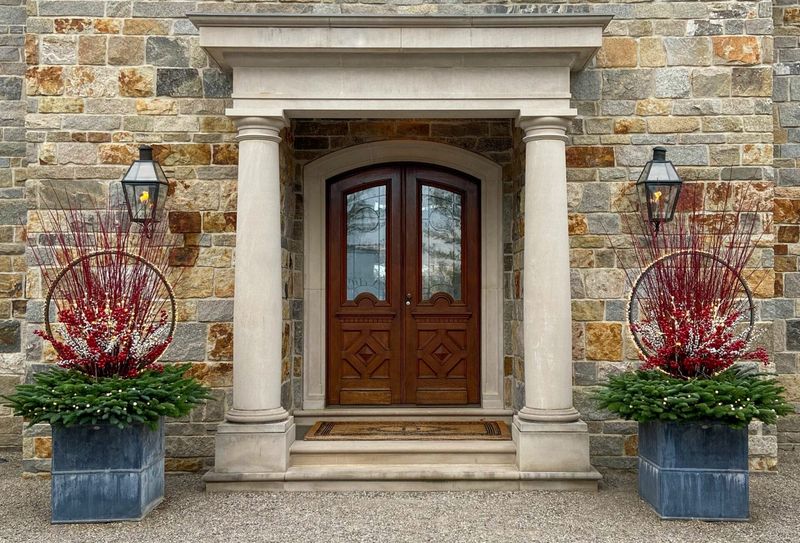
Why let your front porch look like it’s waiting for guests who never showed up? Empty entryways practically shout, “Nobody lives here, move along!”
Decorative containers are the earrings of your landscape, they frame the face and complete the look. Pop a pair of planters beside the front door or line the steps like a leafy little runway.
The best part? They’re mood rings for your house! Switch them up seasonally for blooms in spring, drama in fall, and sparkle in winter.
Even when the rest of the yard is snoozing, those containers keep your entrance looking wide awake.
10. Neglected Mailbox Area
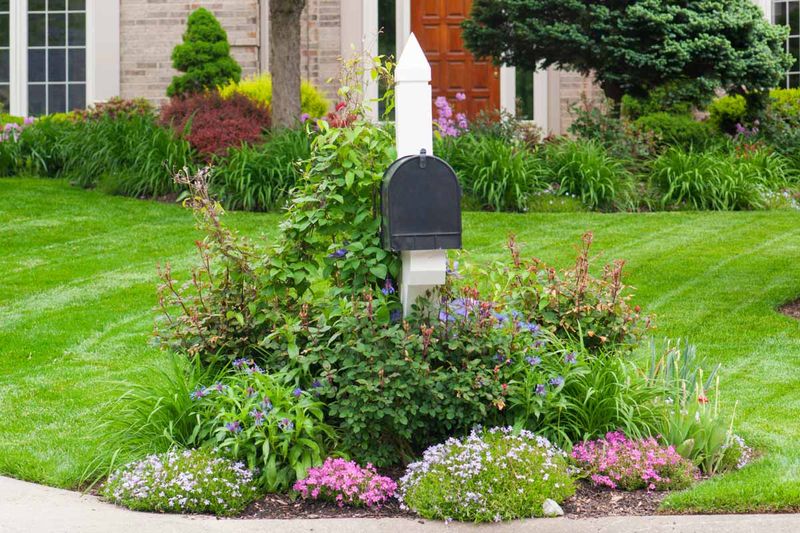
The humble mailbox area is prime real estate that most homeowners completely overlook. This mini landscape is often the closest part of your yard to the street and deserves special attention.
A mailbox surrounded by cheerful flowers, ornamental grasses, or a small flowering shrub creates a welcoming vignette that enhances your entire property. Plus, mail carriers secretly rank houses by their mailbox plantings. True story!
Consider adding a small trellis behind the mailbox for climbing plants or installing a more decorative post that complements your home’s style.
11. Missing Mulch
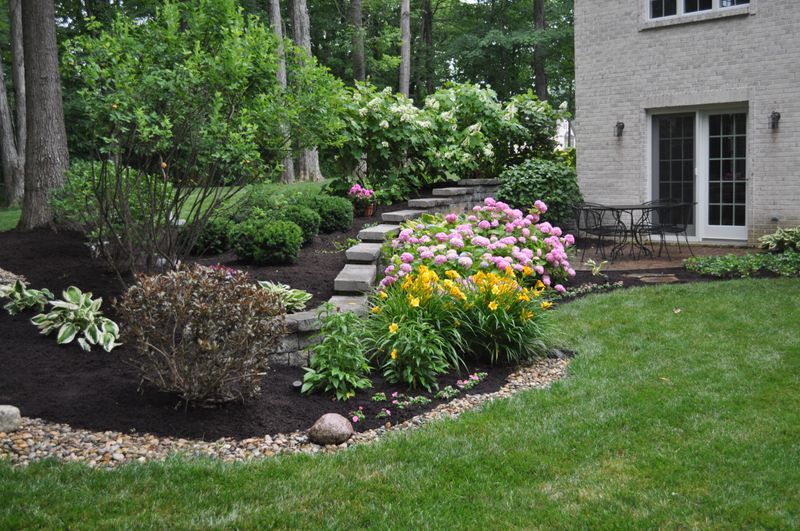
Bare soil between plants creates that sad, unfinished look that screams amateur gardener. Beyond aesthetics, exposed soil invites weeds and loses moisture rapidly, stressing your plants.
Quality mulch is the unsung hero of polished landscapes! It instantly unifies planting beds while suppressing weeds and retaining crucial soil moisture. The rich color contrast between mulch and plants makes your greenery pop visually.
Choose natural materials like shredded bark, pine straw, or cocoa hulls that will break down over time to improve your soil structure.
12. Insufficient Plant Density
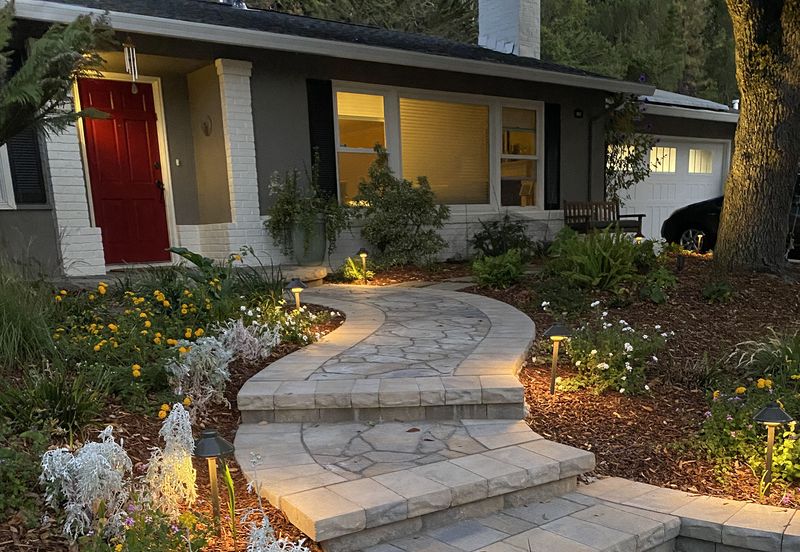
Sparse planting with too much space between specimens creates that sad, new-development look. Plants positioned like lonely islands in a sea of mulch never achieve that lush, established feel that makes gardens inviting.
Professional designers often follow the rule, “First year sleep, second year creep, third year leap.” But who wants to wait three years? Plant more densely from the start!
Group plants in odd-numbered clusters rather than spacing them evenly. This creates natural-looking drifts that mimic how plants grow in nature.
13. Forgetting Year-Round Structure

Ever notice how some gardens look like they packed up and left for Florida as soon as winter hits? That’s what happens when you rely only on deciduous plants, come December, you’re left with a bunch of sticks and regrets.
A great garden keeps its bones all year long. That’s where evergreens come in, the sturdy overachievers of the landscape world.
They hold their shape, color, and cool while everything else takes a nap. Throw in some colorful bark, berries, or quirky seed heads, and suddenly winter isn’t so bleak. Even a charming trellis or a well-placed sculpture can keep your yard from going completely ghost town.
14. Too Much Lawn

Excessive lawn creates that boring, featureless look that lacks character and dimension. While some turf is practical, a yard that’s nothing but grass is the landscape equivalent of an empty canvas.
Reducing lawn area in favor of thoughtfully designed planting beds instantly adds sophistication and interest. The contrast between manicured turf and lush plantings creates dynamic visual tension that elevates your entire property.
Bonus, less lawn means less mowing, watering, and fertilizing. Better for your weekend and the environment!
15. Missing Water Feature
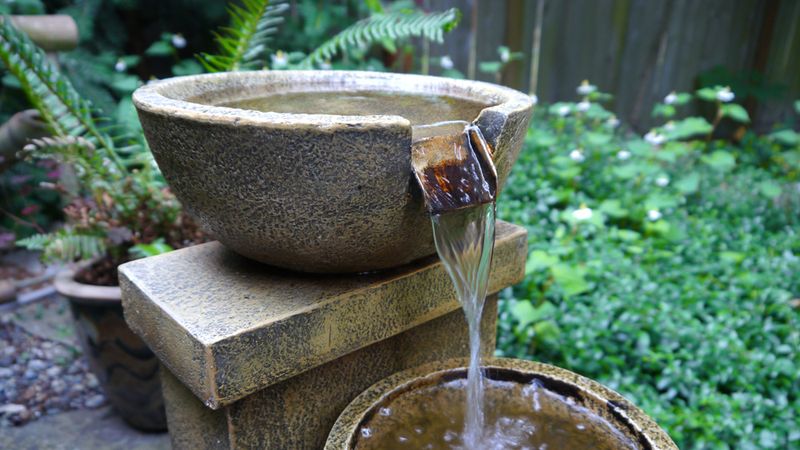
Gardens without water elements lack that crucial multi-sensory dimension that makes outdoor spaces truly engaging. Water brings movement, sound, and reflective qualities that plants alone cannot provide.
Even small water features like bubbling urns, simple fountains, or tiny reflecting pools create focal points that transform ordinary landscapes into memorable ones. The sound of water also masks traffic noise while attracting beneficial wildlife.
Modern options include self-contained, recirculating systems that require minimal maintenance and can be installed without professional help.
16. Missing Walkway
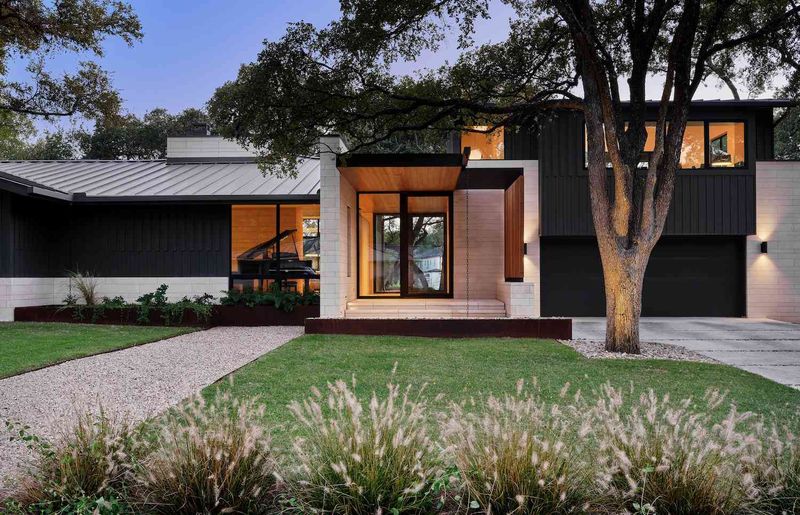
I once visited a home where the only way to the front door was across a soggy lawn, and let me tell you, nothing says welcome like cold, wet socks. A front yard without a clear path just feels confused.
Pathways aren’t just practical, they set the tone. They tell guests, this way to the good stuff.
Whether it’s winding brick, crisp concrete, or gravel that crunches just right underfoot, a well-laid walkway turns an empty yard into an inviting journey. Extra charm if it keeps my shoes clean and my ankles dry.
17. Neglected House Numbers

Tiny, faded, or hard-to-find house numbers create a surprisingly negative first impression. These small details signal neglect and make your home unwelcoming to visitors (and emergency services!).
Oversized, decorative house numbers can become design features in their own right. Choose styles that complement your home’s architecture. Sleek modern digits for contemporary homes or ornate numbers for traditional styles.
Consider creating a mini vignette around your numbers with plants or decorative elements to further enhance this often-overlooked area.
18. Absence Of Garden Art
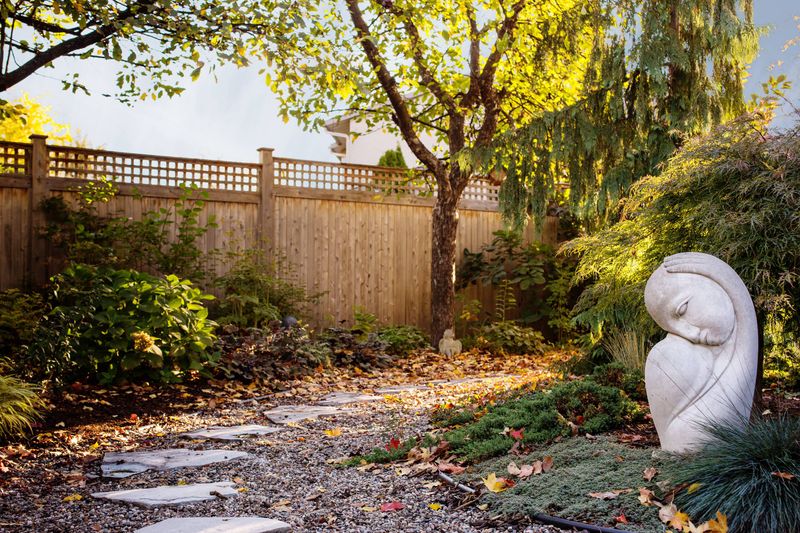
Landscapes without personal touches or artistic elements feel generic and soulless. Garden art provides personality, whimsy, and year-round interest even when plants aren’t at their peak.
Sculptural elements, weather-resistant artwork, or even repurposed vintage items can become conversation pieces that make your landscape uniquely yours. These pieces can also direct attention to certain areas or distract from less attractive necessities.
Choose pieces that reflect your personality but complement your home’s style. The goal is thoughtful curation, not garden gnome overload!
19. Forgetting Wildlife Elements

Curious why your garden feels more like a museum than a jungle party? Without wildlife-friendly touches, your yard might be missing its VIP guests, birds, butterflies, and all the buzzing locals that bring the place to life.
Adding a birdbath or planting nectar-rich flowers invites these tiny performers to the stage, turning your space into a lively show. Imagine hummingbirds zipping by or butterflies doing their graceful ballet right outside your window.
Even a quirky birdhouse or feeder can make your garden the hottest hangout spot in the neighborhood.
20. Overlooking Nighttime Appeal
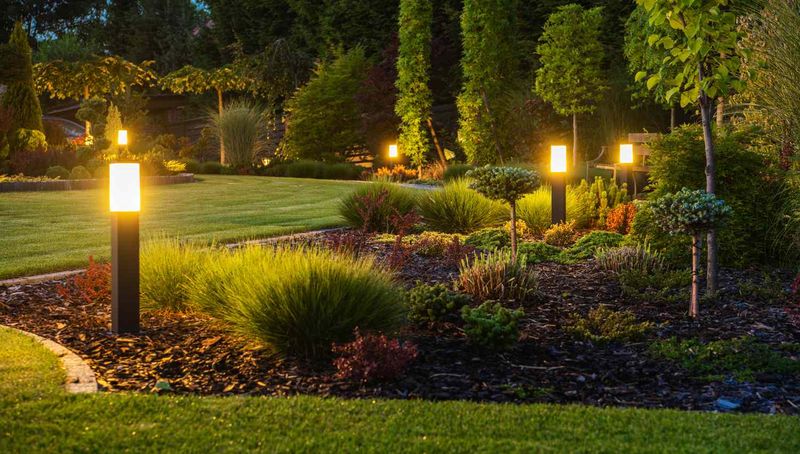
Gardens designed only for daytime viewing waste half their potential impact. Your landscape should be equally compelling after sunset, especially in front yards where evening arrival is common.
Beyond basic safety lighting, consider how your garden transforms at night. Light-colored flowers that glow in moonlight, plants with silvery foliage, or grasses that create dramatic shadows can create an entirely different nighttime garden.
Strategic uplighting on architectural elements or specimen plants creates theatrical effects that can’t be achieved during daylight hours.
21. Missing Multi-Season Plants
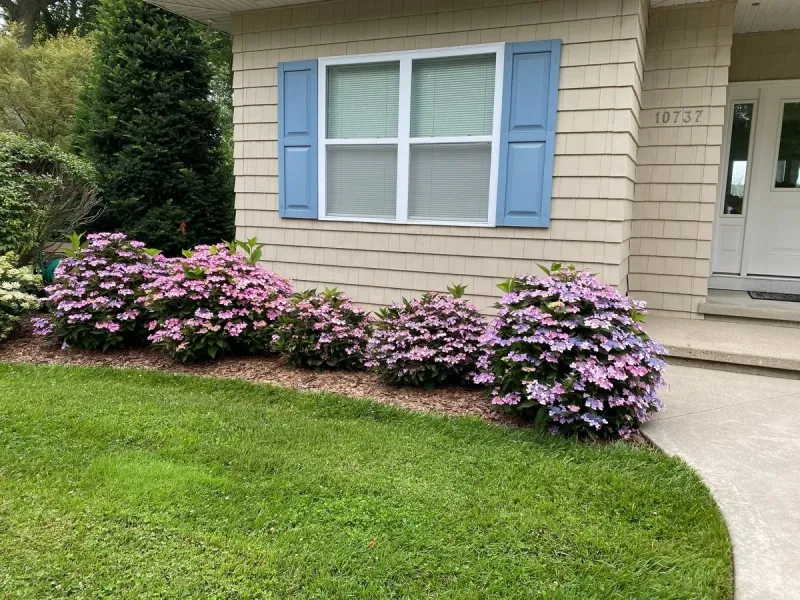
Gardens stuck on the one-hit-wonder playlist suffer from plants that shine briefly then ghost your yard like a bad date.
The secret to continuous interest is choosing multi-tasking plants that provide at least two seasons of appeal. Think crabapples with spring flowers and fall fruit, hydrangeas with summer blooms and winter seedheads, or dogwoods with spring flowers and fall color.
These workhorse plants ensure your landscape never has that vacant, nothing-happening look regardless of season.

